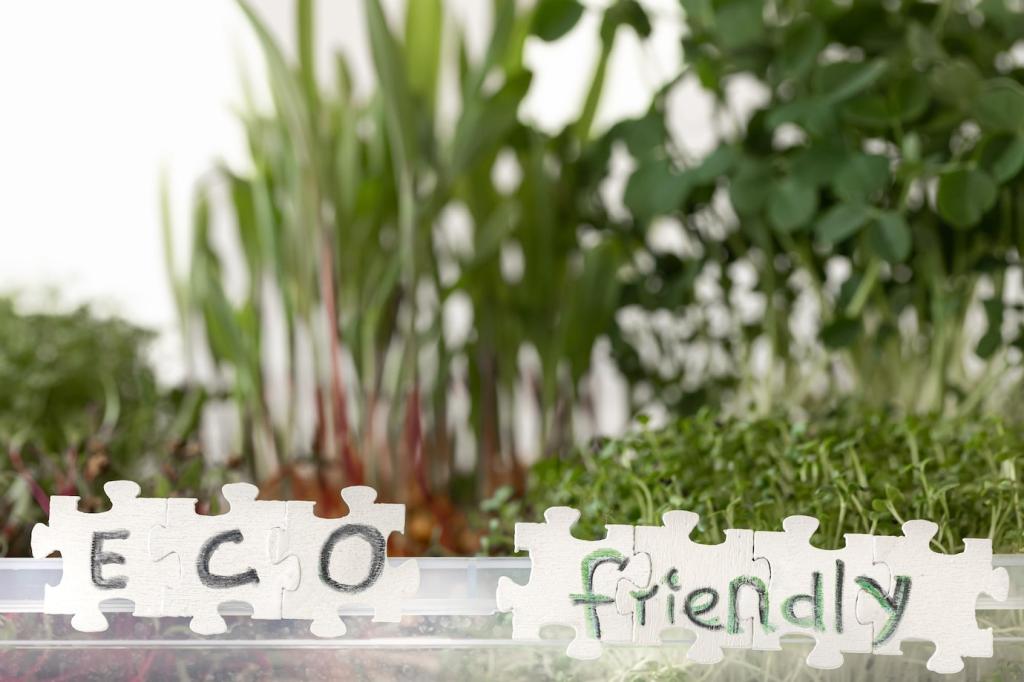
Tips for Long-Lasting Eco-Friendly Furniture
Discovering how to choose, maintain, and extend the life of eco-friendly furniture is essential for anyone who values sustainability in their home. With a focus on both environmental impact and durability, the right approach ensures that your furnishings remain beautiful and functional for years to come. This guide offers practical advice on making your eco-friendly furniture truly long-lasting, supporting both your lifestyle and the planet.

Opting for Certified Wood
Certified wood, such as that endorsed by the Forest Stewardship Council (FSC), ensures the timber is harvested responsibly. These certifications provide assurance that forests are managed with consideration for wildlife, workers’ rights, and the health of entire ecosystems. Choosing furniture made from FSC-certified wood not only supports sustainable practices but often comes with the added benefit of superior craftsmanship. Such wood is less likely to have been treated with harsh chemicals, making it safer for house use and simpler to maintain over time. Prioritizing certified wood sustains forests for future generations and ensures your furniture stands the test of time with minimal harm to the planet.

Embracing Bamboo and Other Renewables
Bamboo and other rapidly renewable materials like rattan and cork are excellent choices for eco-conscious furniture. These materials grow quickly—sometimes up to several feet per day—making them highly renewable compared to traditional hardwoods. Bamboo, in particular, is known for being lightweight yet exceptionally durable, resisting swelling and warping over time. When purchasing furniture made from these materials, it’s important to verify that harvesting and manufacturing processes follow sustainable guidelines. Doing so guarantees that your furniture will not only last but will also align with your ethical and sustainability values, providing peace of mind alongside style.
Gentle Cleaning Techniques
Using mild, non-toxic cleaning products is key to preserving both your furniture and the environment. Harsh chemicals can strip natural finishes, dull surfaces, and even release toxins into your living space. Instead, opt for plant-based soaps, vinegar solutions, or just a simple mixture of water and mild detergent. When cleaning, use soft cloths or brushes to avoid scratching or damaging delicate surfaces. Regular dusting prevents buildup of dirt, which can act as an abrasive, while promptly addressing spills minimizes risk of stains and watermarks. By investing time in gentle, regular cleaning, you help protect finishes and keep your furniture looking new without compromise.
Routine Inspection and Early Repairs
Routine inspection allows you to identify small issues such as loose joints, minor scratches, or the beginnings of rust before they become major problems. Promptly addressing these signs of wear ensures your furniture enjoys a long life. For wood furniture, periodically check for cracks or dryness, applying natural oils or wax as appropriate to restore luster and prevent splitting. With metal pieces, watch for any signs of corrosion and treat immediately with eco-friendly solutions. Taking a proactive approach to repair not only sustains functionality but also upholds the aesthetic value of every piece, further reducing the need for replacement.
Environmental Protection for Indoor and Outdoor Pieces
Ambient conditions such as humidity, sunlight, and temperature fluctuations can all affect your furniture’s lifespan. Position indoor pieces away from direct sunlight to prevent fading and drying out, and use window treatments when necessary. For outdoor furniture, choose eco-friendly sealants and covers that provide protection from rain and UV rays without introducing toxins. Maintaining stable humidity levels inside your home also helps prevent warping and cracking, particularly with wood and bamboo. Consistent, subtle environmental protection measures ultimately prolong the beauty and sturdiness of your eco-friendly furniture, preserving your investment.
Previous slide
Next slide
Sustainable Upkeep Practices

Natural Polishing and Conditioning
Regularly polishing and conditioning your eco-friendly furniture with natural solutions not only enhances its appearance but also preserves its fundamental qualities. For wooden pieces, using beeswax or plant oils instead of synthetics helps to feed the wood, maintaining its flexibility and sheen. These natural substances penetrate deep, preventing cracking or fading while avoiding the harmful volatile organic compounds often found in conventional polishes. Eco-friendly conditioners can also be used on rattan, bamboo, and leather to protect against brittleness. By establishing a schedule to gently polish and condition your furniture, you support both its longevity and your commitment to sustainable living.

Avoiding Single-Use and Disposable Products
Single-use cleaning tools and disposable furniture accessories contribute unnecessary waste and may contain chemicals that are hazardous to both the environment and your furniture. Instead, opt for washable cleaning cloths, reusable dusters, and accessories crafted from recyclable or biodegradable materials. The longevity of your eco-friendly furniture is further supported by choosing textile protectors and covers that can be laundered or recycled at the end of their life. This zero-waste approach not only preserves the integrity of your pieces but also reduces your household’s environmental footprint and fosters a culture of mindful consumption.

Supporting Local Artisans and Repair Services
When your eco-friendly furniture needs maintenance or restoration, local artisans and repair services represent a sustainable option that supports your community while extending the item’s usability. Skilled craftsmen can offer specialized care, using appropriate materials that align with your furniture’s construction and values. Sourcing repair parts locally often means lower transportation emissions and access to authentic, high-quality components. By fostering relationships with local experts, you gain valuable advice on care and maintenance tailored specifically to your furniture, all while reducing the demand for new production and supporting local economies.
